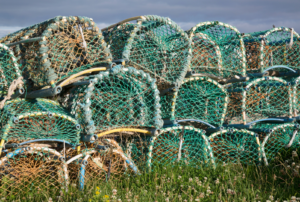
Grants
Tackling environmental threats
Static Gear Reserves
£15,000 awarded
Scoping a National Network of Inshore Static Gear Reserves
Grantee: Fish Legal
Duration: February 2025 – February 2026
Note: this project is co-funded by The Fishmongers Company.
This project scopes the design for a Network of Inshore Static Gear Reserves for Scotland, as a low-impact alternative model to the current intensive pattern of bottom-trawl fishing.
Background
Scotland’s inshore marine environment continues to be threatened by bottom-trawling and dredging. These intensive fishing practices destroy seabed habitats; an environmental disaster in terms of biodiversity and carbon loss, while simultaneously causing fish stocks to decline.
Currently, bottom-trawling is allowed in 95% of Scotland’s inshore waters (see here). However, the Scottish Government are legally required to comply with the ‘ecosystem-based management’ approach set by the UK Marine Strategy , a set of regulations that are underpinned by international obligations and commitments to protect and preserve the marine environment.
The Project
Creating an alternative model that aligns with this ‘ecosystem-based approach’, and presenting this to key stakeholders in industry and Government, has the potential to create systemic change in the management of inshore fisheries, with positive knock-on social and economic impacts for coastal communities.
Fish Legal, a non-profit organisation that take action throughout the UK to protect the marine and freshwater environment, were awarded £15,000 by HIEF in December 2024 to carry out this project, in association with the Scottish Creel Fishermen’s Federation.
The National Network of Inshore Static Gear Reserves (NNISGR), will focus specifically on Nephrops Norvegius– a small lobster species also known as Norway Lobster, langoustine, and scampi. It will present ‘low-impact, high value’ creel fishing as an alternative to the ‘high impact, low value’ method of bottom trawling.
Creating this model will involve:
- Scoping the design principles for the NNISGR
- Estimating the Gross Value Added contributed by NNISGR
- Potentially assessing the wider economic benefits and the feasibility of developing a Green Finance Model
Results will then be shared with key stakeholders and form the foundation for Political Advocacy work.
